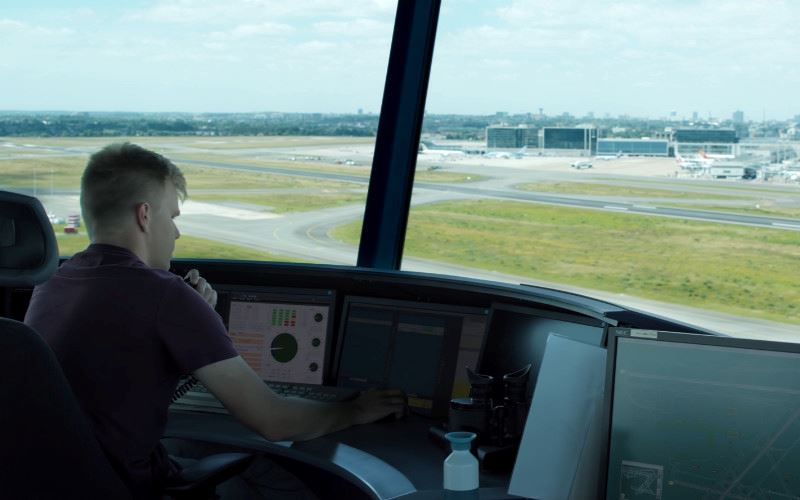What does an air traffic controller do?

More to our towers than meets the eye
Mention 'air traffic control' and people spontaneously think of a control tower. Not that we are not proud of our towers - not everyone has a 60m high desk with a panoramic view - but the job of air traffic controller does not always take place in a tower.
Nerve centre with various functions
To start with, we would like to take you to CANAC 2, better known as the nerve centre of radar air traffic control. All air traffic controllers there are responsible for overflying and approaching air traffic below 7,500 metres (24,500 feet). So that is literally miles from any airport.
They have the same working positions, but can perform different functions according to their training and experience:
- the radar traffic controller deals with the tactical, immediate management of traffic situations in his sector. He works in tandem with a 'planning controller' who has a proactive view of the traffic and manages the flows;
- the radar planning controller with whom he acts in tandem ensures both a smooth traffic flow and maximum safety for air traffic.
These "air traffic control teams" are responsible for a specific sector or part of the airspace. They will ensure the safety of your aircraft according to the flight phase it is in. This is what they do step by step:
- shortly after take-off, the APP (Approach) controllers take over from the tower: they guide the aircraft during its climb to cruising altitude.
- when the aircraft has almost reached that altitude, the responsibility is transferred to the ACC (Area) controllers: they optimise the aircraft flow over a longer distance. An arriving aircraft will start its descent at ACC, after which it is transferred to APP: they make the final arrival sequence, which they transfer to the TWR.
In the centrally located and recently completely renovated Supervisor Suite of CANAC 2, there are:
- the Supervisor: he oversees operations and assumes administrative and coordination tasks;
- the Traffic Manager: he controls the volume of air traffic according to available capacity, in coordination with the control centres of neighbouring countries and the Central Flow Management Unit (CFMU) of Eurocontrol which manage traffic flows at European level (41 countries).

Ground control to Major Tom
In the control tower, air traffic controllers also have different roles. In total, there are three separate functions that ensure that your aircraft can take off safely, from boarding at the boarding gate to take-off.
- Clearance delivery: this air traffic controller ensures that the departing aircraft is assigned the correct departure route and time for take-off. That information is communicated to the ground controller to ensure that the aircraft reaches the runway within a specific timeframe.
- Ground control: the ‘ground controller’ is responsible for the 'movement area' of an airport. All aircraft and vehicles moving in this movement area must receive permission from the ground controller. The ground controller is also responsible for optimising the sequence in which aircraft must line up at the runway threshold in order to speed up the take-off rhythm.
- Air control: the ‘air controller’ is responsible for the movements on the runways and for the air traffic in the immediate vicinity of the airport. He gives aircraft permission to take off or land. If the air controller notices a potentially unsafe situation, he can instruct the pilot of a landing aircraft to go around or order a departing aircraft to refrain from taking off.
In the tower itself, as in CANAC 2, swift communication between air and ground control is absolutely essential to ensure safe and efficient air traffic. This does not only involve communication between the air traffic controller and the pilot in the first place, but also communication between the air traffic controllers themselves to manage air traffic harmoniously.





